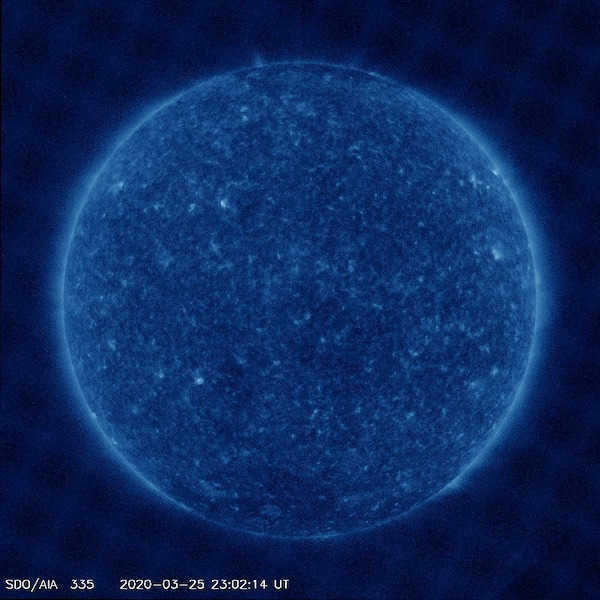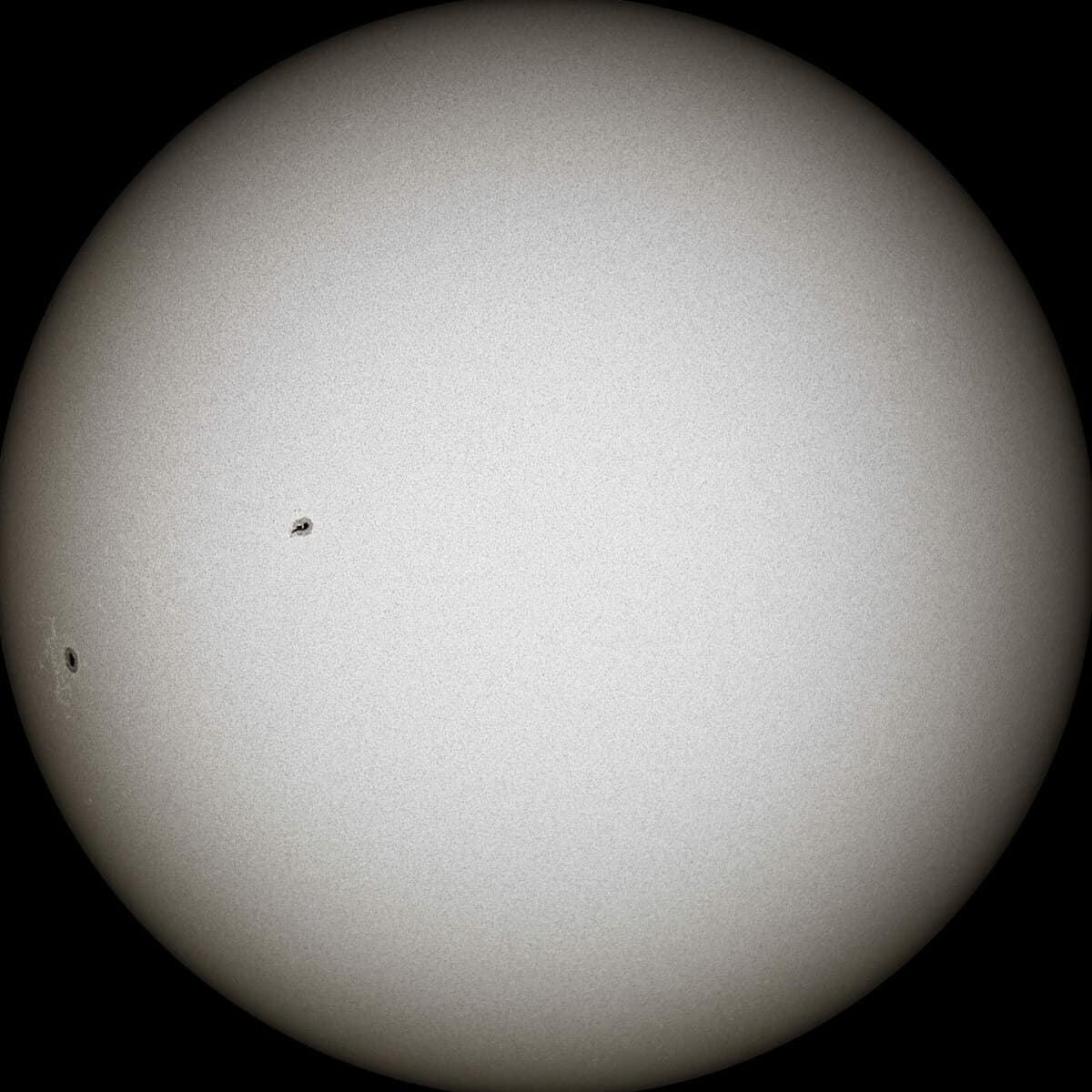What is the actual color of the Sun?
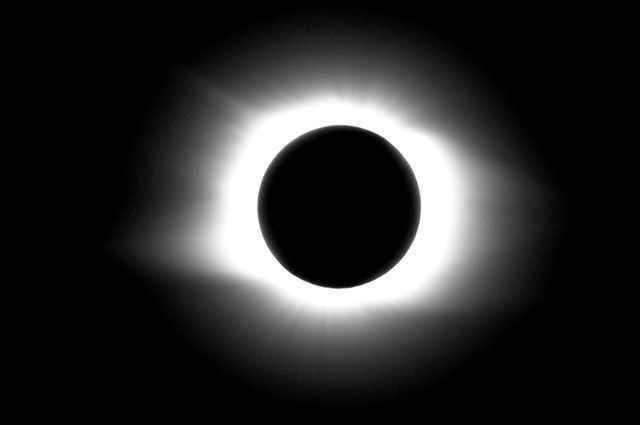
Due to the unique characteristics of the human eye, the Sun appears to be a vibrant shade of yellow or orange. However, in actuality, the light emitted by the Sun is white. This optical illusion occurs because the direct sunlight that reaches the Earth’s surface undergoes molecular scattering in the atmosphere, causing the shorter wavelengths of the light spectrum to take on a yellow or orange tint.
Why does the Sun appear yellow from Earth?
When viewed from space, the Sun appears to be white. This is because the Sun emits light in all colors, which our eyes and brains interpret as white. However, when we observe the Sun from Earth, it appears yellow. This is due to the Earth’s atmosphere and the way it interacts with sunlight.
As sunlight passes through the Earth’s atmosphere, it undergoes a process called scattering. This is when the light is dispersed in different directions by particles and molecules in the atmosphere. The process of scattering is more effective for shorter wavelength light, such as blue and violet, compared to longer wavelength light, such as red and yellow.
As a result, when sunlight reaches the Earth’s surface, a larger proportion of the shorter wavelength blue and violet light gets scattered away, while the longer wavelength red and yellow light is able to reach our eyes. This leads to a shift in the color of the Sun’s light that we perceive from space.
Therefore, from Earth, the Sun appears yellow because the shorter wavelength blue and violet light has been scattered away by the Earth’s atmosphere, leaving mostly the longer wavelength red and yellow light to reach our eyes.
Based on information from the World Encyclopedia, the Sun has an effective surface temperature of 5789 degrees Kelvin, which is a contributing factor to its white color.
Why does the Sun appear yellow or orange to humans?
When the Sun rises or sets, it appears bright yellow or orange to the human eye. This phenomenon is attributed to the Earth’s atmosphere, according to scientists. During these times, the Sun emits a wide range of light frequencies. For instance, at the Earth’s surface, sunlight consists of approximately 50% infrared light, 40% visible light, and 10% ultraviolet light.
At midday, the shorter blue waves of light interact with air molecules in the upper atmosphere, causing them to scatter multiple times before reaching the human eye. This scattering effect is also responsible for the blue color of the sky.
As the sun rises and sets, it is closer to the horizon, causing the light to pass through a greater number of atmospheric molecules. This increased interaction with the atmosphere causes the blue photons to scatter, resulting in a lower-energy yellow or orange color. Additionally, when there is dust or smoke in the air, the scattering effect is enhanced, giving the Sun a reddish hue. The scientific community has confirmed these findings.
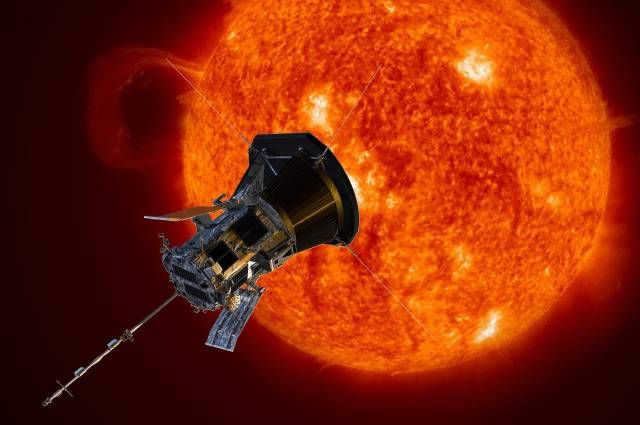
Have you heard about the intriguing theory regarding the actual color of the Sun?
“According to Malykhin’s explanation to the news agency, the color green can be associated with the range of 500 to 570 nanometers. This leads us to the attention-grabbing headline: the Sun is actually green,”

However, there are certain nuances to this discovery, as pointed out by Malykhin. He emphasized that our ability to perceive colors is limited by three types of photoreceptors in the human eye. The L-receptor, which is the most sensitive, allows us to see the yellow-red range. The M- and S-receptors, on the other hand, enable us to perceive green-yellow and violet-blue shades respectively. It is the L-receptor that makes it easiest for humans to detect the signal, resulting in the perception of red-orange tones. Ultimately, our brain processes these signals and balances them to create the perception of white.
“The Sun’s radiation curve covers almost the entire visible range of sunlight (380-780 nanometers). The L, M, and S cones in our visual organs are uniformly illuminated by the Sun’s radiation due to the peculiarity of perception. Our brain compensates for this and perceives each color as being equal, resulting in us seeing white. This is the main point made by the original article by the British scientist,” Malykhin informed us.
At first glance, the question of the Sun’s color may seem trivial. It is commonly known that the Sun appears yellow. We see it in the sky, it is depicted as such in various pictures and diagrams, and we can observe its yellow hue in photographs. However, the reality is more complex than it appears. What is the true color of the Sun?
Is the Sun actually yellow?
The Sun is classified as a yellow dwarf star, specifically of spectral class G2V. This classification is given to stars that have surface temperatures ranging from 5000 to 6000 K, and their sizes and masses are similar to that of the Sun. In popular culture, yellow dwarfs are typically depicted as yellow, red dwarfs as red, and so on.
When you observe the sky during a time when the Sun is not at its highest point and its brightness is not overpowering, you can clearly perceive its yellow color. This observation is evident even to children, who often instinctively draw the Sun using a yellow crayon.

When viewed from this perspective, the Sun appears to have a yellow hue. It would be foolish to disregard our own observations, especially since it is easily observable in person.
Is the Sun actually white?
If we were to pass sunlight through a prism, it would break down into a spectrum, revealing different colors. This means that sunlight is composed of electromagnetic waves spanning the entire visible spectrum, and we perceive light as electromagnetic waves with varying wavelengths. The glass prism refracts these waves differently, allowing us to see their distinct separation. This is a concept that most of us are familiar with from our high school physics classes.
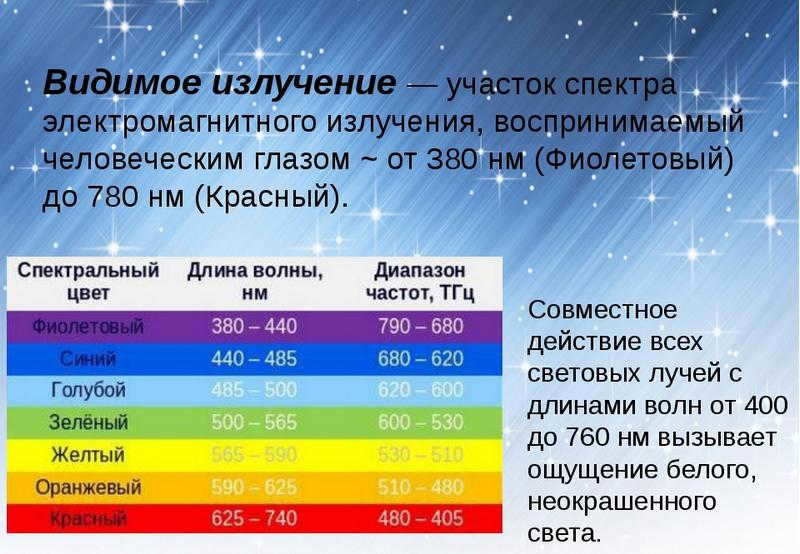
The Sun emits electromagnetic waves that cover the full range of the visible spectrum, spanning from violet to red. When these waves combine, they result in the perception of white light. Observations captured in space reveal that the Sun appears white in color when included in the frame.
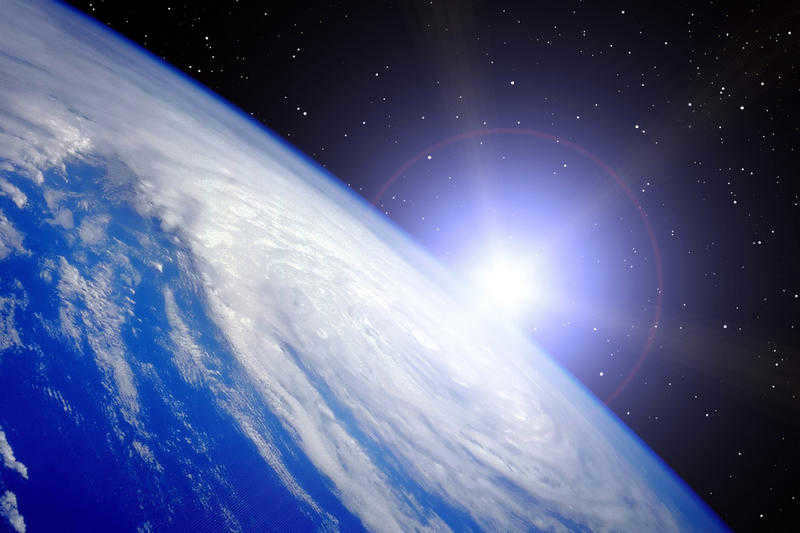

It is no surprise that the Sun appears white, considering that it emits radiation in various ranges, and visible light represents only a fraction of its overall radiation. Additionally, the proportion of yellow light is not greater than that of other colors. Given its surface temperature of 5800 K, the Sun is expected to have a white appearance.
Is the Sun really green?
While the Sun emits radiation across a wide range of wavelengths, resulting in the production of white light, the portion of radiation with a wavelength of 500 nm is more dominant, giving off a green hue. This is why we perceive the Sun as being green in color.
Does this sound absurd to you? Surprisingly, there is evidence of the Sun appearing green. You might have heard of the phenomenon known as the “green ray,” which can sometimes be observed during sunset, just before the Sun sets below the horizon. Although this phenomenon can be witnessed anywhere, it is more commonly observed at sea. In fact, there is even a novel titled “The Green Ray” that explores this topic, and numerous pictures capturing this phenomenon exist. Here is one of them:

Occasionally, during sunset, the Sun emits a green ray.
On certain occasions, the color of the sky truly transforms into green.
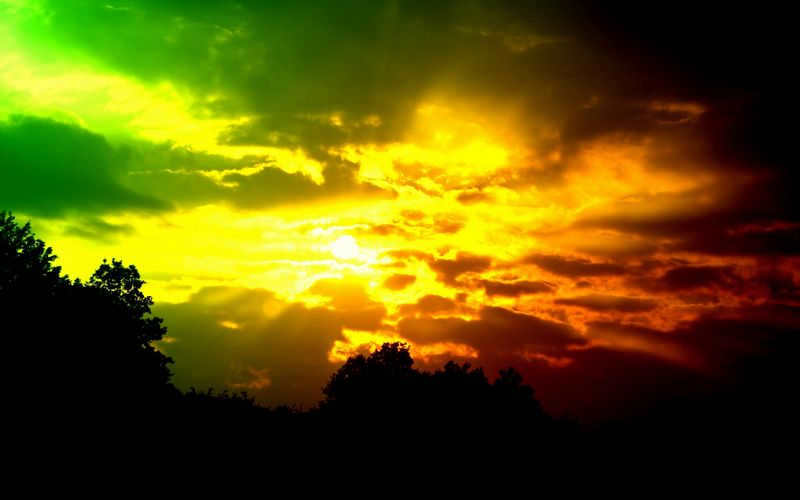
What is the true color of the Sun?
It can be quite perplexing – we perceive the Sun as yellow or green, but in the vastness of space, it appears white. Where does the truth lie and what is the actual color of the Sun? The answer is straightforward – the Sun is white, precisely because it emits light across the entire visible spectrum. The slight dominance of green does not have a significant impact and is not easily discernible under normal circumstances.
Why does the Sun appear yellow to us? The reason is that we are on planet Earth, situated beneath the atmosphere, and we observe the Sun through it. The atmosphere scatters the violet and blue wavelengths of light, resulting in a blue sky. As a result, the Sun’s color appears more yellow because the red wavelengths of light are scattered less effectively in the atmosphere. Additionally, the orange and yellow wavelengths are also in close proximity to the red part of the spectrum.
During sunset, the Sun appears red because only radiation with longer wavelengths is able to penetrate the thick layer of the atmosphere. This is because when the Sun is low in the sky, the light it emits reaches us at an angle, passing through a larger amount of air compared to when it is directly overhead. As a result, the light undergoes more scattering, causing the Sun to appear red.
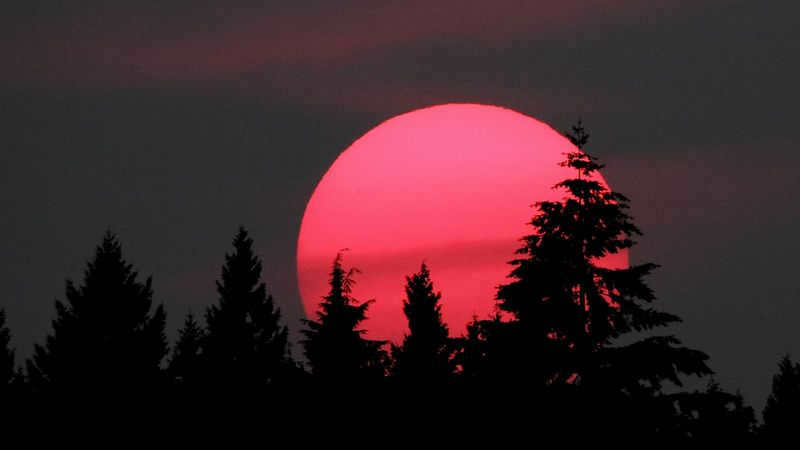
The atmosphere is not as pure as it appears, with a high concentration of dust, water vapor, and other particles. As a result, the thicker the atmosphere, the more it absorbs and bends light. Hence, the Sun appears red and less luminous during sunset, making it safe to gaze at.
Occasionally, under perfect refraction conditions, the Sun may appear green, emitting a distinctive green ray. However, this phenomenon is short-lived and rare.
The green portion of the spectrum, despite its significant contribution to the Sun’s overall radiation, is also scattered in the atmosphere, resulting in the sky appearing not purely blue, but with a hint of green. However, we do not perceive it as green because our eyes do not distinguish individual colors, but rather the combined blue-green portion of the spectrum, where blue and violet dominate. When we look at the sky during the day, the cones in our retinas are sensitive to blue, green, and yellow light. As a result, the sky appears blue.
In reality, the color of the sun is white. This is how it appears when observed from space, where the atmosphere does not interfere. In desert regions, the white color of the sun is also clearly visible, as the air is dry and contains minimal water vapor, reducing the refraction and distortion of light.

The Sun appears white in the desert region.
However, in illustrations and diagrams, it is intentionally shown as yellow, which is a more familiar depiction. When viewed through a telescope with a filter, the Sun may also appear yellow due to atmospheric effects. Similarly, photographs of the Sun, whether taken with or without a telescope, often display a yellow hue. This can be attributed to both atmospheric conditions and the use of colored filters, which are employed to enhance contrast and emphasize specific details.

The sun frequently appears red, particularly during sunrise or sunset, as it must travel through a larger portion of the atmosphere to reach the viewer’s eyes.
It is intriguing how the sun, often depicted as yellow in educational materials, exhibits various hues within a single day.
When it emerges above the horizon, it typically displays a red tint. As it ascends higher in the sky, the redness diminishes, and it gradually becomes brighter, eventually appearing brilliantly white at midday. Naturally, sunlight is so intense during this time that it is unsafe (and ill-advised) to directly gaze at the sun. However, when observed through protective eyewear, it will appear white. Then, as it descends, it adopts a reddish shade.
Let’s explore the reason behind the sun’s color variation during different times of the day. Specifically, we will discuss why the sun appears red during sunset and sunrise, but white at noon.
Sunlight and the Earth’s atmosphere
The Earth’s atmosphere is composed of various gases, water vapor, and dust particles. This protective layer of gas surrounding our planet serves multiple purposes. It not only supports all forms of life on Earth by providing the necessary gases for biochemical processes, but also acts as a shield against the sun’s harmful rays, while retaining its heat. Additionally, it helps to repel any potential invaders from outer space.

Aside from providing these vital resources that guarantee the existence of all living organisms on our planet, the atmosphere is also responsible for producing some fascinating occurrences, including the movement of air currents, the azure hue of the sky, and the varying shades of the sun throughout the day.
What causes the sun to appear red during sunrise?
When the sun rises, its light goes through a phenomenon known as scattering. Have you ever wondered why the sun looks red during this time?
Understanding electromagnetic radiation is key to understanding this phenomenon. Electromagnetic radiation refers to various types of energy waves, including visible light, which allows us to see the world around us.
During sunrise, the sun’s light has to pass through a thicker layer of Earth’s atmosphere. This causes the shorter wavelengths of light (such as blue and green) to scatter more, while the longer wavelengths (such as red and orange) pass through relatively unscathed. As a result, the sun appears red during this time.
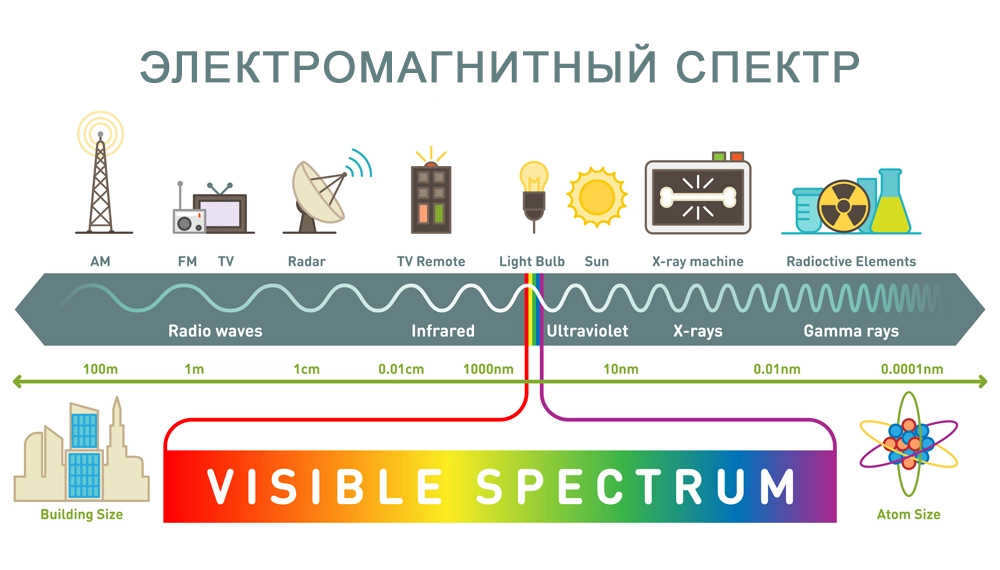
As previously mentioned, sunlight is composed of electromagnetic radiation. While the sun emits a wide range of electromagnetic radiation, the majority of sunlight is comprised of visible light, ultraviolet rays, and infrared rays (which we perceive as heat).
You may remember from your high school science class that sunlight appears white because it is a combination of all seven colors of the rainbow, each with its own unique wavelength.
When sunlight, which is made up of various colors with different wavelengths, reaches our planet and enters the atmosphere, the particles in the atmosphere tend to scatter shorter wavelength light, such as blue and violet, while allowing longer wavelength colors like red, yellow, and orange to pass through.
The sun appears red when observed near the horizon because the longer wavelengths of red light can penetrate our atmosphere more effectively than other colors, allowing them to reach our eyes.

Why does the sun have a distinct red hue during its setting or rising?
The reason behind this is that during sunset or sunrise, the sunlight has to traverse a greater distance through the Earth’s atmosphere to reach the viewer’s eyes. As a result, the blue light in the sunlight scatters more easily, causing the sun to appear more red when it is setting or rising.
In fact, there is a natural phenomenon called Rayleigh scattering (named after the British physicist Lord Rayleigh) which explains that shorter wavelengths (such as blue light) scatter more readily compared to longer wavelengths (such as red light).
This is the reason why the sky appears blue and the sun, and sometimes even the moon, appear red or orange.
What is the reason behind the sun appearing white during midday?
The same concept is applicable in this case. When the sun is positioned directly above, it has to go through the minimal amount of atmosphere to reach the eyes of an observer on the Earth’s surface. As a result, it has a lower probability of colliding with a large number of atmospheric particles.

Due to this phenomenon, the eye of the observer perceives all the different colors of sunlight with nearly equal intensity. This combination of wavelengths results in the Sun having a stunning white color (although it is important not to directly observe it with the naked eye).
To explain further, the reason the Sun appears red is because red light can more easily pass through the atmosphere compared to other colors. This is why celestial bodies visible from Earth often have a reddish-orange tint, which can vary depending on the time of day and their position in the sky!

The human eye perceives the Sun as yellow due to the optical effect caused by the structure of our eyes. However, in reality, the Sun is actually white in color. The yellow hue that we see is a result of the atmosphere, with the Sun appearing even yellower when the sky is bluer. This phenomenon is particularly noticeable after rain when the weather is clear. On cloudy days, the Sun appears white instead.
This image taken from the International Space Station (ISS) provides a clear depiction of the Sun’s natural white color, unaffected by atmospheric distortion.

1.7K posts 3.2K followers
Community Guidelines
We kindly ask that you conduct yourself in a respectful manner, valuing the opinions of others and avoiding any quarrels – let’s foster a friendly environment. )
The photograph clearly displays the location where the Earth’s axis used to be. Unfortunately, it was recently damaged by bears, leading to a series of unfortunate events.
Is it not true that the human eye and a camera respond differently to the intensity of radiation, based on its wavelength?
In reality, the peak intensity of radiation occurs at 501nm, which is closer to the color green. Therefore, if one were to perceive the visible spectrum with equal sensitivity, the sun would appear white-greenish in space and yellowish on Earth (due to atmospheric absorption).
What color is the sun during the nighttime?
During a physics class, it was proven that the sun appears green.
Why is the sun classified as a yellow dwarf?

Discover the latest comet C/2023 P1 (Nishimura).
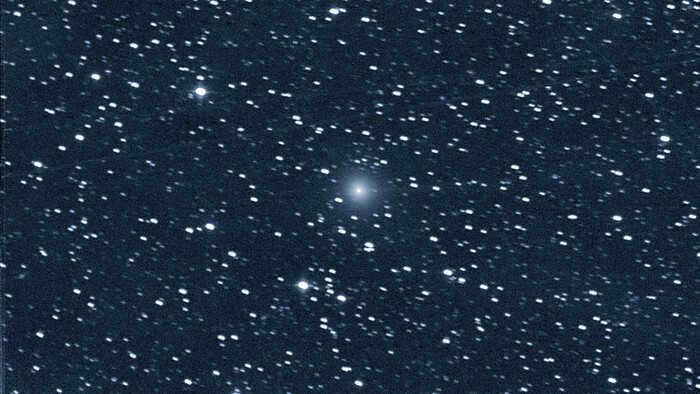
Comets can be quite unpredictable. While older comets that we are familiar with can sometimes disappoint us by losing their brightness over time due to repeated approaches to the Sun, newly discovered comets can often be bright and spectacular. However, this is not always the case.
The constellation Gemini is still home to Comet C/2023 P1, which was first spotted by Japanese astronomer Hideo Nishimura on the night of August 11-12, 2023. It can be considered a stroke of luck to discover such a faint and hazy object (with a magnitude of 12) in the gradually brightening sky before dawn. This amazing find is a true testament to Nishimura’s exceptional professionalism and expertise.
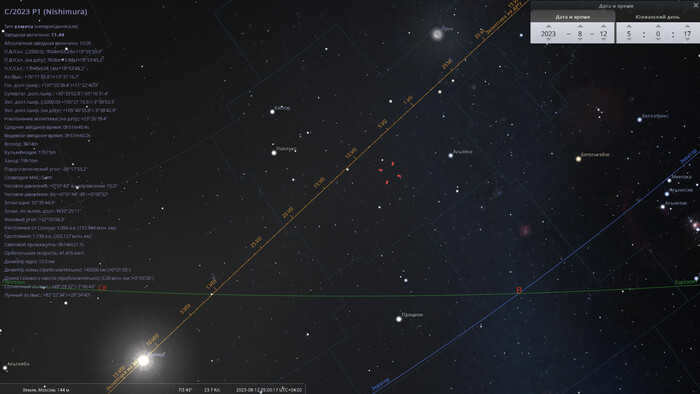
The location of comet C/2023 P1 in the constellation Gemini (at the time of its discovery) on the morning of August 12, 2023 remains unchanged.
However, the comet has been progressively increasing in brightness each night. It has now reached a magnitude of 10, making it visible through medium-power amateur telescopes. While it is still observable before dawn, the viewing conditions for Comet Nishimura have slightly improved since its initial detection.
What comes next?
By September 18, 2023, the comet is expected to reach perihelion, the point in its orbit closest to the Sun, at a distance of 33 million kilometers from its glowing surface. This is approximately twice as close as Mercury. However, unlike Mercury, which is a solid rock, the comet is made of ice, which means it will start melting and evaporating well before reaching perihelion. In fact, this process has already begun, and astronomers have observed a small tail, measuring only 8-10 angular minutes in length, composed of gases and dust emitted from the comet’s heated nucleus.
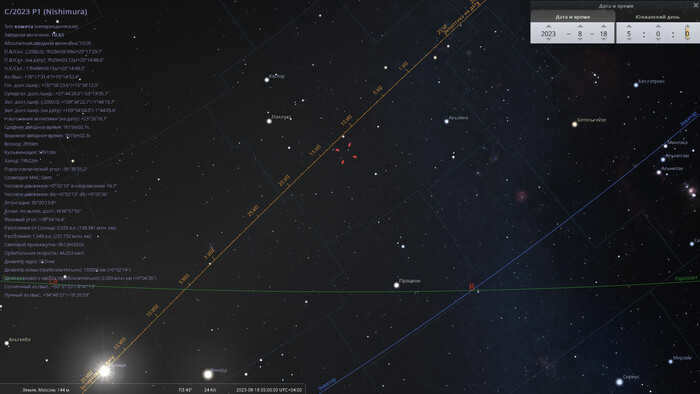
On the morning of August 18, 2023, comet C/2023 P1 can be found in the constellation Gemini.
Currently, the comet is in the process of crossing the Earth’s orbit, and it is actually positioned on the opposite side of the Sun from us. As a result, the distance between the Earth and the comet is quite substantial, roughly one and a half astronomical units. However, this situation is rapidly changing.
By the start of September, the comet will be only 1 astronomical unit away from Earth (and ½ ae away from the Sun). The angle between the Sun and the comet (elongation) will decrease slightly (from 35 to 30 degrees), but this minor inconvenience will be balanced out by the growing difference in declination between the two – essentially, the comet’s tail will be visible directly above the Sun, allowing for clear viewing even before sunrise.
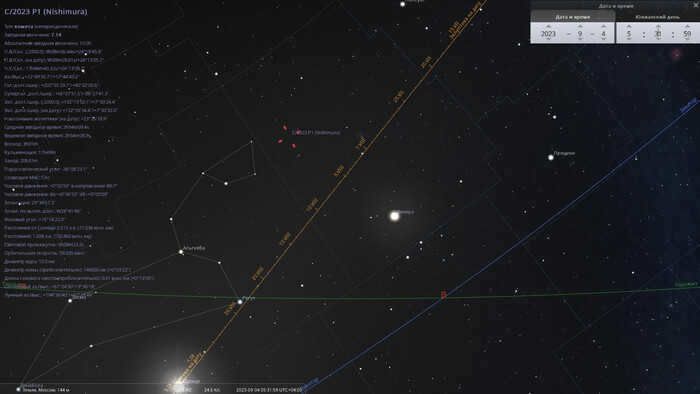
In the skies on the morning of September 4, 2023, you can find the comet C/2023 P1 positioned in the Cancer constellation. It will be located near the border with the Leo constellation, specifically near the asterism known as “Lion’s Head,” which serves as a helpful landmark for spotting it. Additionally, the bright planet Venus will also be shining in the same constellation. By September 4, 2023, the comet’s brightness is expected to reach the 7th magnitude, making it easily observable with binoculars.
By the morning of September 9, 2023, comet C/2023 P1 will be approximately 1 degree west of the star Adhafera (Zeta Leo), and its brightness will have reached the 6th magnitude. Under optimal conditions, such as in mountainous, desert, or steppe areas, the comet may even be visible to the naked eye.
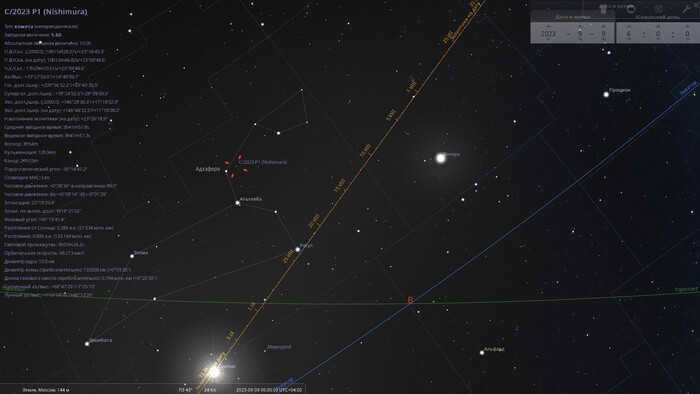
The location of comet C/2023 P1 in the constellation Leo on the morning of September 9, 2023
Regrettably, the angular separation from the Sun will decrease to 22 degrees, but the comet will ascend even higher above the ecliptic, and despite the limited elongation, it will remain visible for at least one and a half (and possibly up to two) hours.
In the subsequent days, the brightness of the comet will continue to increase, however, the angular separation from the Sun will decrease, making observation conditions more challenging.
By the morning of September 12th, the comet’s brightness will reach a magnitude of 5 stars, and its elongation will decrease to 17 degrees. Simultaneously, the comet will remain visible above the Sun, providing an opportunity to locate it in the morning twilight close to the star Zosma (Delta Leo).
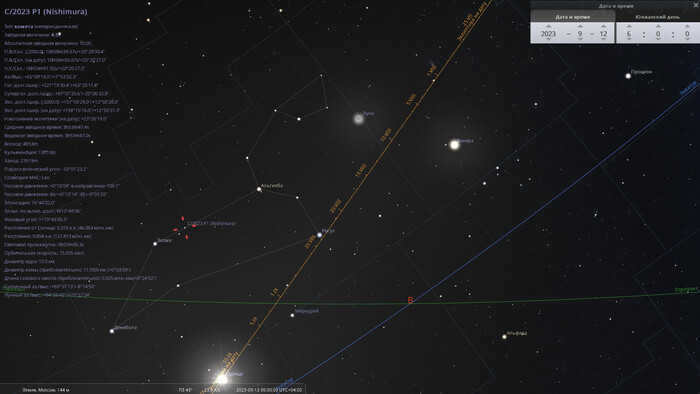
The location of comet C/2023 P1 in the Orion constellation is shown in the image above.
On the morning of September 15, the comet will come close to the bright star Denebola (Beta Leo), which has a magnitude of 2. The comet itself will be slightly fainter, with a magnitude of around 3. However, due to the bright dawn background, it will be quite challenging to spot both the comet and the star.
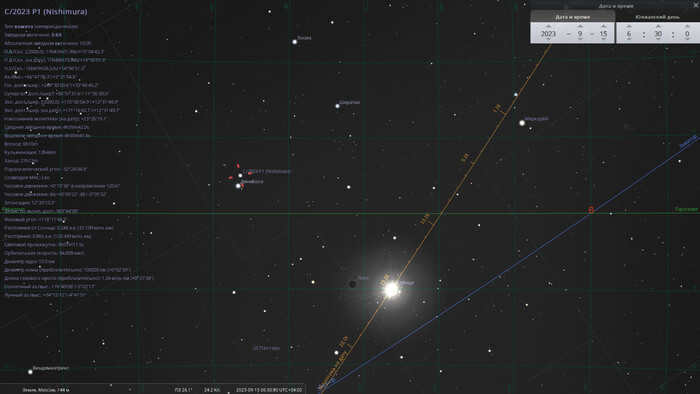
On September 15, 2023, in the constellation Leo, you can find the comet C/2023 P1 in the morning sky.
During its perihelion, the comet is expected to have a brightness of around 2nd magnitude. In the evening, shortly after dusk, observers in the northern hemisphere will be able to spot the comet in the northern part of the constellation Virgo. However, in the southern hemisphere, it will be either impossible or extremely challenging to see the comet due to its higher declination compared to that of the Sun.
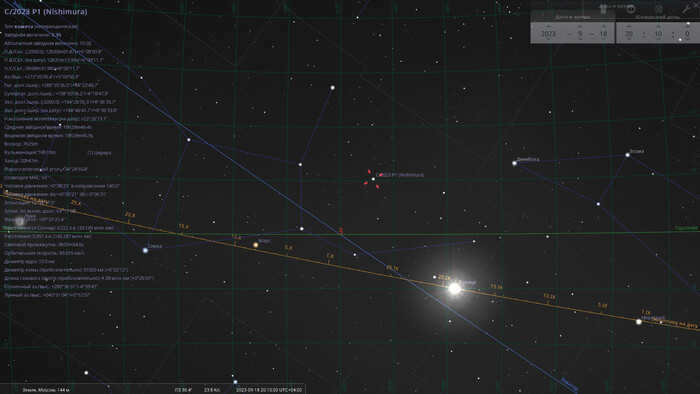
The comet C/2023 P1 will be located in the constellation Virgo on the evening of September 18, 2023, as it reaches its closest point to the Sun (perihelion).
As the days go by, the comet will gradually move further into the southern part of the celestial hemisphere. It will cross the celestial equator around the same time as the Sun, which is a day before the autumnal equinox on September 21, 2023. During this time, the brightness of the comet will diminish to 4.5m.
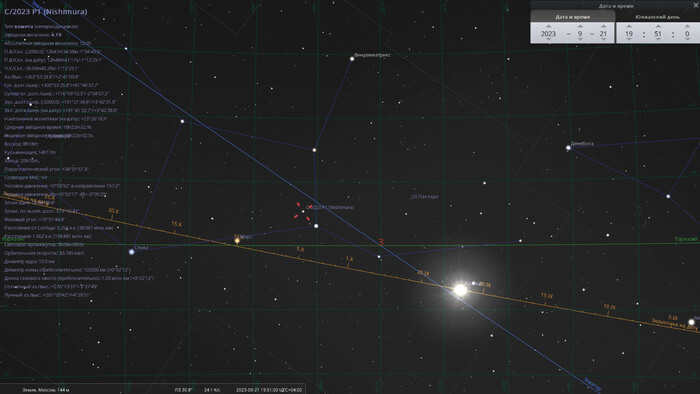
On the evening of September 21, 2023, you can locate comet C/2023 P1 in the constellation Virgo.
If you want to find comet C/2023 P1 Nishimura on the evening of October 1, 40 minutes after sunset, you will need to be in Australia or the middle latitudes of South America… or perhaps at the southern tip of Africa. The comet’s brightness will only be around 7.5m, so it’s not really worth buying tickets just to see it.
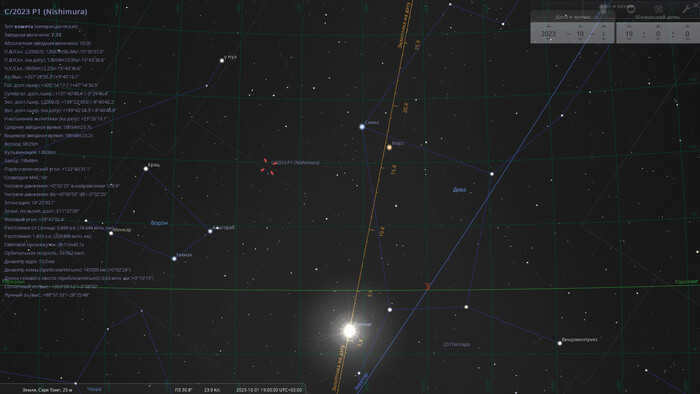
On the evening of October 1, 2023, comet C/2023 P1 can be seen at the border of the constellations Virgo and Raven for observers in Cape Town, South Africa.
By mid-October, the comet will continue its journey further south, entering the tail section of the Hydra constellation. Its brightness will decrease to the 10th magnitude, and visibility conditions will become unsatisfactory even in the southern hemisphere. In fact, at this point, the comet will no longer be visible to astronomy enthusiasts anywhere on Earth.
When will the comet make its next appearance?
Not on our watch. Currently, the precise orbital elements have only been estimated. These approximations are sufficient for determining the comet’s position in the sky for the next few months, but the exact period of its orbit remains unknown. Despite being classified as a long-period comet, its orbit’s eccentricity is considered to be one, indicating that the comet’s path is nearly parabolic or even entirely so. This implies that its return to the Sun could occur in a million years or perhaps never at all.
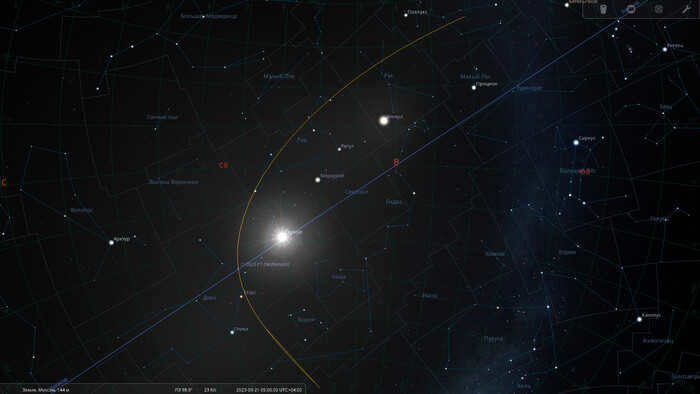
The path of the comet C/2023 P1 Nishimura from August 12 to November 1, 2023.
The maps were generated using the Stellarium software.

Start of the astro-season
The time has come for us to venture into the season as the darkness slowly envelops our surroundings. It may be a bit premature, as the nights are not completely dark yet, but it is the perfect opportunity for me to test out my new camera in its natural habitat. Fortunately, the Perseids meteor shower coincided with a day off, a relative absence of moonlight, and clear weather, allowing us to venture out into the fields.
My first subject was the Milky Way, which is currently in an optimal position for our location. Even the core is slightly visible, making it a captivating sight.



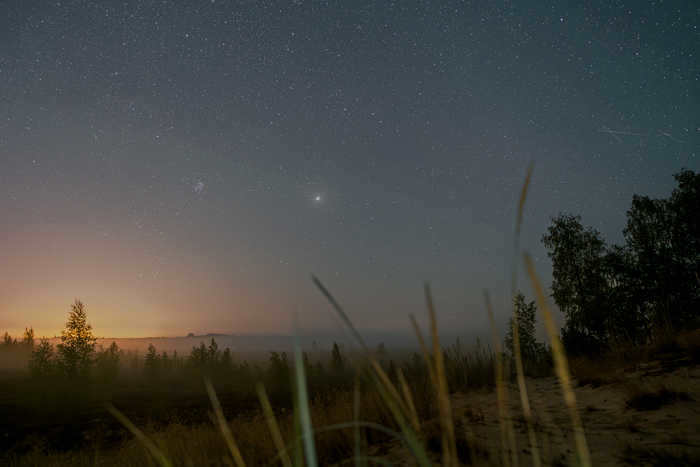

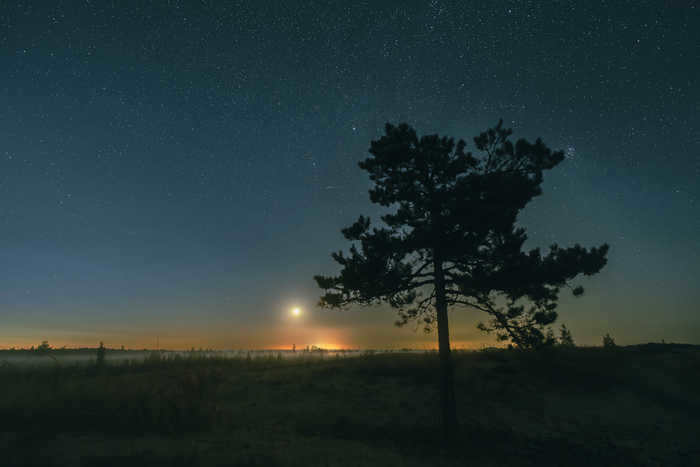
The Perseids reached their peak activity last night, with meteors flying by once every five minutes. Unfortunately, most of these meteors appeared either in the pauses between frames or during a camera malfunction. However, some of the most vibrant ones did manage to make it into the frame. While the photos may not be the best quality, they serve as proof of the event. It may be several years before we have another opportunity to capture such stunning meteor activity.
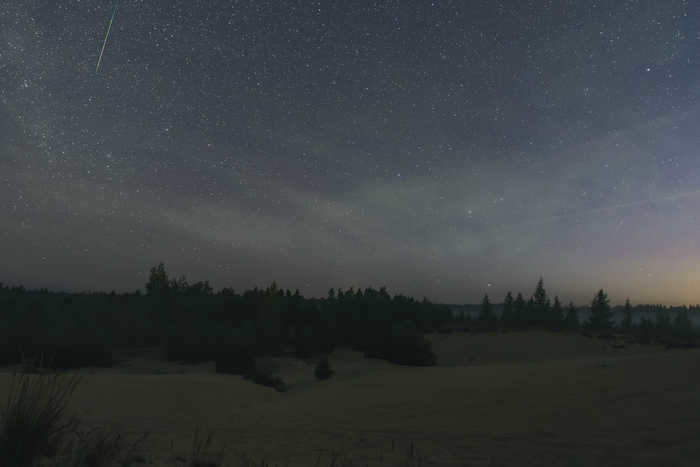
Using a Sony A7III camera and a Sigma Art 20mm F/1.4 DG DN lens, I captured a variety of shots with different settings, though the majority were taken with a 15-second exposure, ISO 8000, and an aperture of F1.4-1.6. Afterward, I processed the images in Lightroom and Photoshop.


The galaxy where the Orion constellation is located is called the Milky Way.
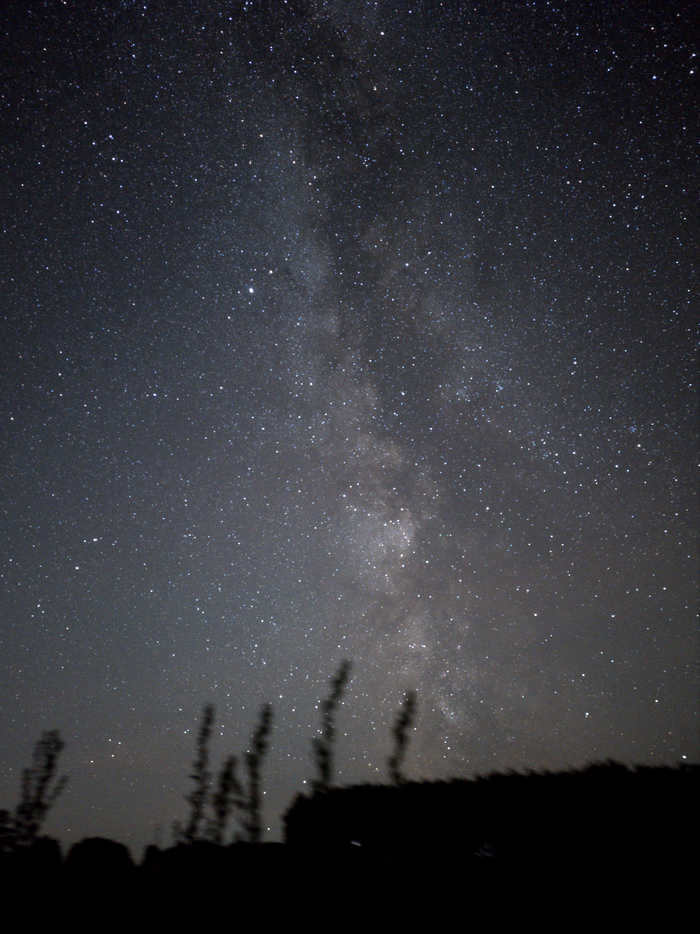
There are 10 amazing photos with a shutter speed of 15s and ISO 3200 taken with a Samsung s20fe in the beautiful green zone of the Southern Urals.

Perseids meteor shower
I also wanted to show you the outcome of spending 4 hours being bitten by mosquitoes in the fields of Belarus. Unfortunately, I was only able to capture one meteor with a low-quality Chinese fisheye lens. The other photos turned out to be of satellites.
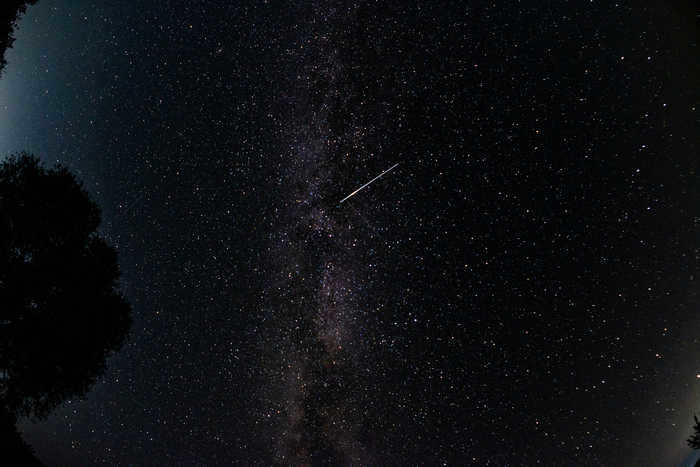
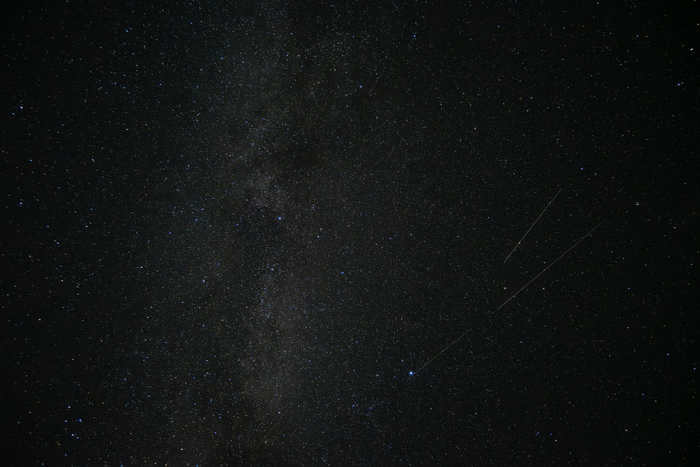

A glimpse into the vastness of the Milky Way
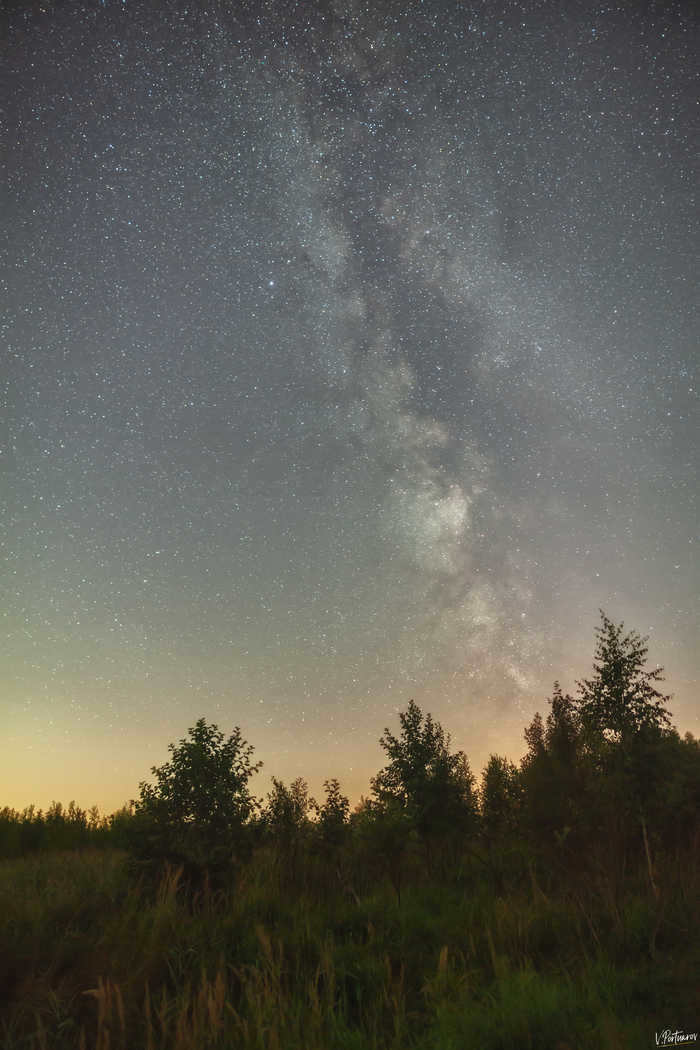
The silence of the night
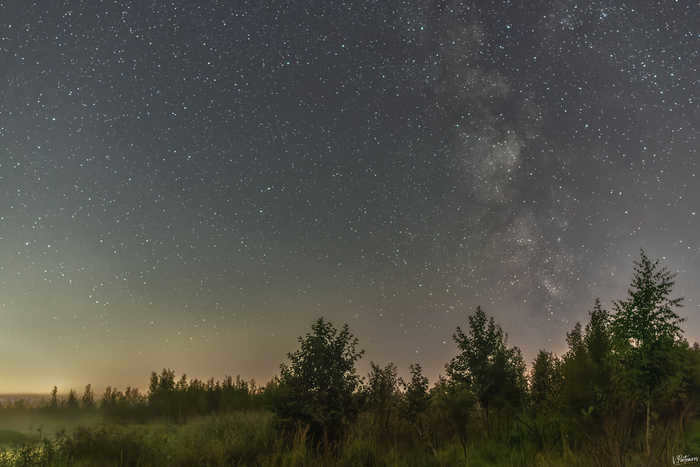
The most alluring plots of land in the solar system.
We are all familiar with the fact that the Soviet Union launched the first artificial satellite in 1957. Since then, numerous space agencies, private companies, and research institutes have been expanding their presence in the solar system. It is impossible to enumerate all the boundaries they have pushed over the years. While it may seem like there is ample space in this vast expanse for everyone, certain pieces of local “real estate” are undeniably more enticing than others. One such example is the Lagrange points, which captivate the attention of all interested parties. These points, named after an 18th-century mathematician who discovered them, are highly valuable as unique oases of stability in our ever-changing corner of the cosmos.
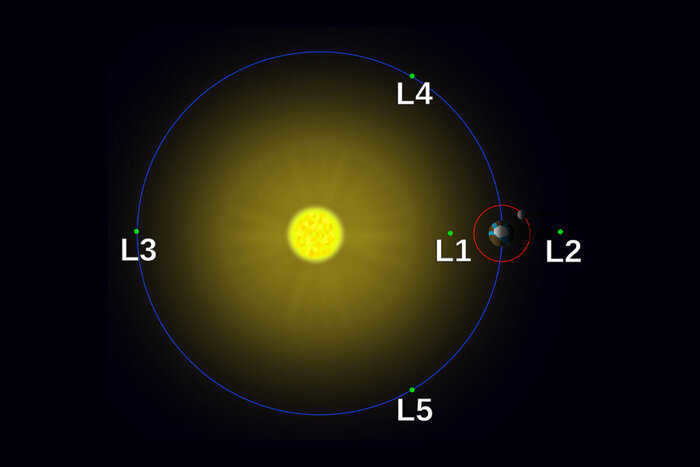
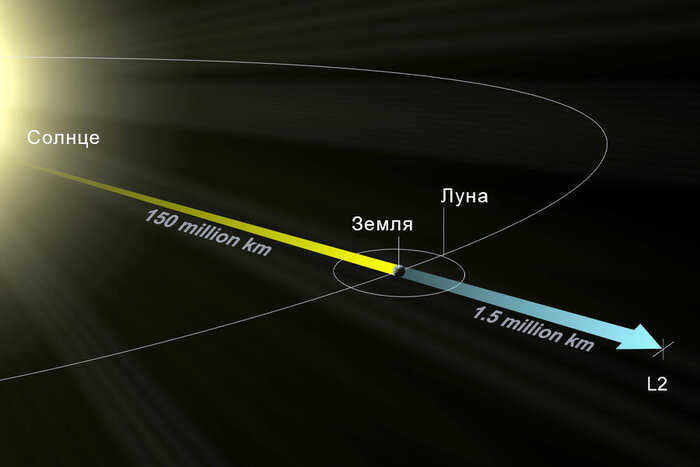
However, our system does not have many typical “parking lots.” Interactions between massive bodies result in the formation of five Lagrangian points for each pair of participants. For instance, the Sun has five points of connection with any of the planets, and each planet has the same number of connections with its satellites. When all of these points are combined, there are over 1000 Lagrangian points in our system. Nevertheless, only a small number of them are practical for human space exploration. Many of these points are challenging to reach, and as we will discover later, they are not very stable. Currently, only two of these locations are actively used, but this situation may change in the future.
It is quite fascinating to ponder what can actually occupy a specific Lagrangian point. Let’s take into account the ones formed by the gravitational interaction between the Sun and the Earth. L1, situated approximately 1.5 million kilometers from our planet, lies between these two celestial entities. With an unobstructed view of the star, it serves as the perfect spot for observing the Sun.
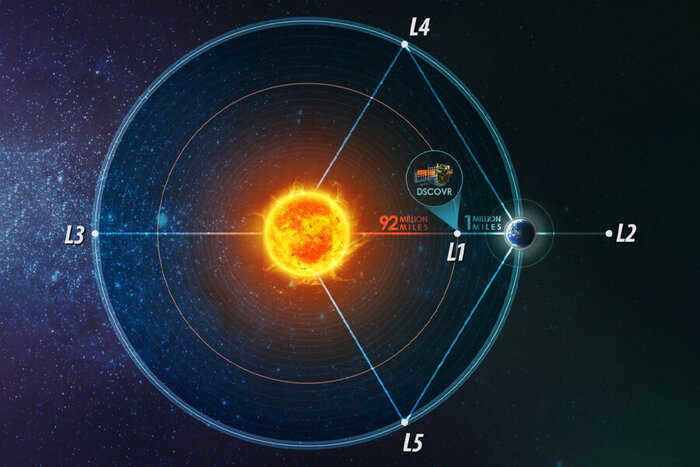
The Deep Space Climate Observatory is a United States spacecraft located at Lagrangian point 1, dedicated to observing the Sun and Earth.
L2 is situated on the opposite side of the Earth, at an equal distance. This positioning ensures it is effectively shielded from sunlight, making it an ideal vantage point for studying space. In 2022, astronomers finally celebrated the long-awaited launch of the James Webb telescope, which began operations from this unique location.
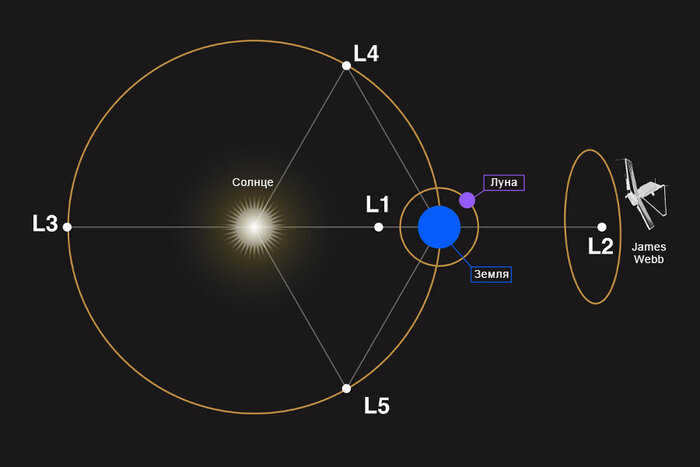
L3, located in the most enigmatic spot on the Earth’s orbit, is an unparalleled celestial point. Situated on the opposite side from the Sun, it remains shrouded in mystery, making it an intriguing subject for science fiction authors. However, scientists, in all honesty, find little practical value in exploring this unique location that cannot be observed from any planetary surface.
The L4 and L5 points have some unique characteristics compared to the previous ones. These Lagrangian points exhibit a slight instability, causing objects within them to gradually shift sideways. Although it is possible to maintain objects in these points with some effort, it requires additional measures. The stability of L4 and L5 in other celestial body pairs may not be very high, especially if their masses differ by less than a factor of 25. However, in the Sun-Earth system, where the star is significantly more massive than the planet, these points display remarkable stability. Additionally, they have a strong gravitational pull, particularly L4 and L5 in the Sun-Jupiter system, which have accumulated thousands of asteroids.
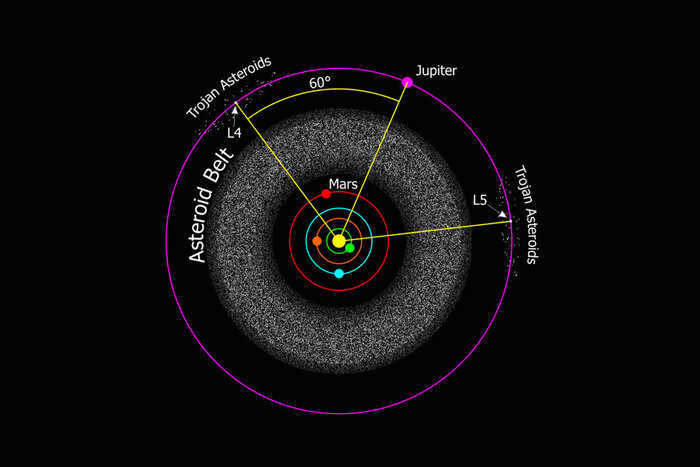
Each Lagrangian point in our solar system possesses its own unique characteristics. Some of these points could be utilized as sources of valuable building materials, comparable to drifting asteroids. Others have the potential to serve as refueling stations, providing fuel for spacecraft venturing into the depths of space. Furthermore, these points could potentially accommodate human colonies. Although this scenario belongs to the distant future, one that we may not witness due to current events transpiring on Earth, it is still enjoyable to contemplate and dream about.
Thank you for your interest! If you enjoyed the article, you have the option to show your support by giving it a “thumbs up” or subscribing to this channel. We also want to let you know that we have our own Telegram channel where we regularly share fascinating posts about space and astronomy.
We genuinely value each and every one of our readers. If you would like to contribute financially (using the button provided below), we will include your name/nickname at the end of our upcoming publication. This is our small gesture of gratitude for your generosity and support!
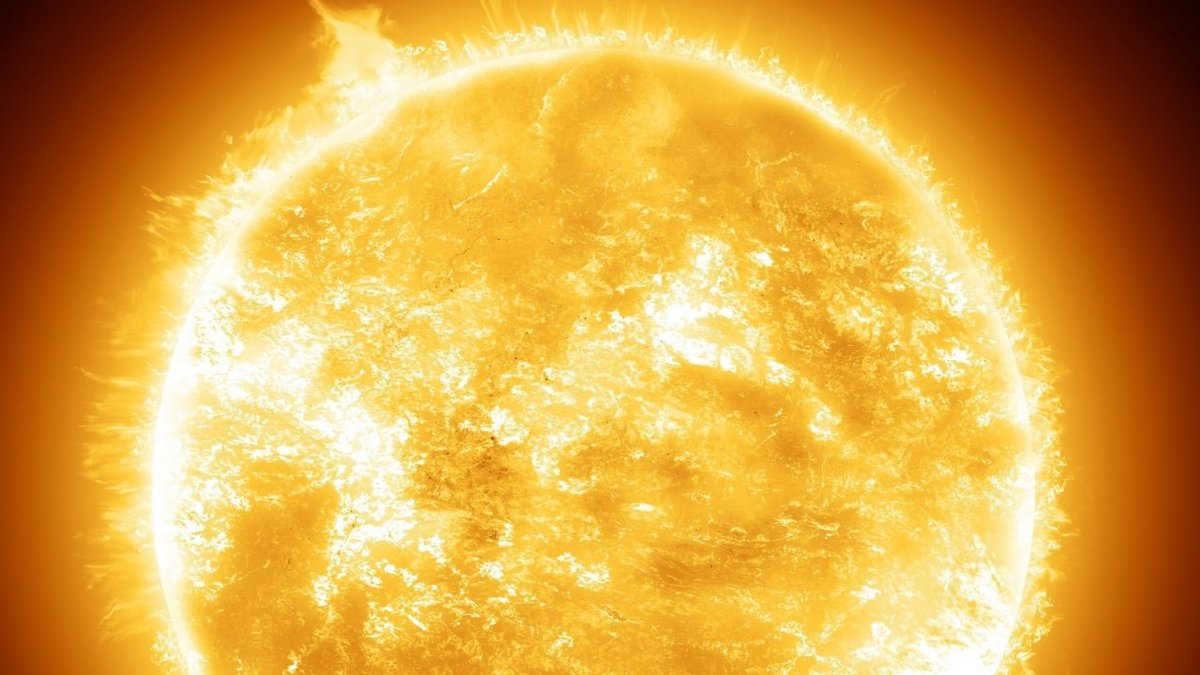
Despite its yellow or orange appearance, the Sun is actually a brilliant white. The Earth’s atmosphere causes the Sun to appear yellow and undergo color changes during sunrise and sunset. However, its true color can only be observed from space, where there are no molecules to interact with the light.
Located at the center of the solar system, our Sun is a nearly perfect sphere of hot plasma. As a G-type main sequence star, it accounts for over 99.8% of the solar system’s mass.
Undoubtedly, the Sun serves as the primary source of energy for life on Earth. However, many people are unaware of its most important characteristic – its true color.
Is it truly so?
Prepare to be astonished by the revelation that the Sun is not actually red, orange, or yellow. In reality, the Sun is a melange of all colors, resulting in a white appearance to our eyes.
The phenomenon of rainbow light, a circular arc consisting of multiple colors, originates from the Sun and is separated into seven distinct hues. Each hue possesses its own unique wavelength, with blue having the shortest wavelength and red having the longest.
What causes the Sun to appear yellow or orange?
When we observe the Sun, it does indeed have a yellow-orange hue, especially during the early morning and late evening. The reason for this can be attributed to the Earth’s atmosphere.
The Sun emits a wide range of light frequencies. When sunlight reaches the top of the Earth’s atmosphere, it is composed of approximately 50% infrared light, 40% visible light, and 10% ultraviolet light. However, the Earth’s atmosphere acts as a filter, blocking out over 70% of the Sun’s ultraviolet light, particularly at the shortest wavelengths.
Photons at the lower end of the color spectrum, such as yellow, orange, and red, are less likely to scatter, while those at the higher end, such as violet, indigo, and blue, are more prone to scattering.
Furthermore, it has been observed that the Sun emits a larger number of photons in the green section of the spectrum compared to any other color.
The upper atmosphere is struck by short wavelengths (blue light) around midday, and these wavelengths are scattered multiple times before they reach our eyes. The scattering effect is what gives the sky its blue color.

Nevertheless, during the dawn and dusk, the sun appears to be nearer to the horizon, leading to a greater amount of atmospheric molecules that light passes through. As the atmosphere expands, the blue photons scatter even further, leaving behind only low-energy yellow, red, and orange light.
In the presence of dust and smoke in the air, this scattering effect is intensified, resulting in the Sun taking on a more reddish hue.
The true hue of our Sun
When observing the Sun from either the Moon or the International Space Station (ISS), its authentic shade becomes evident. As there is no atmospheric obstruction in space, light is unhindered in its journey. Consequently, from an extraterrestrial vantage point, the Sun appears resplendent in a pristine white hue, boasting a CIE color space index of (0.3, 0.3).
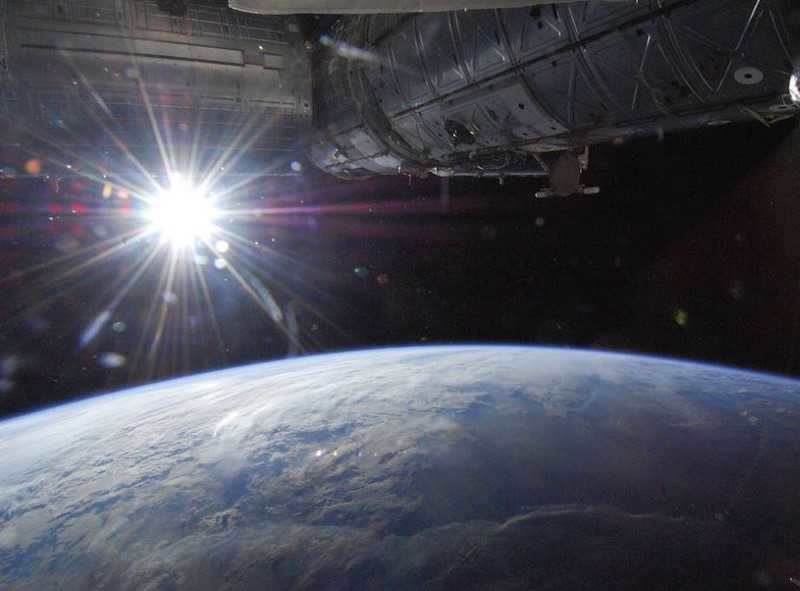
Color is also an indicator of the star’s temperature. Take our Sun, for instance, which has a surface temperature of approximately 5505°C and an average brightness of around 1.88 gig Candela per square meter.
Colder stars have a redder appearance compared to others. Betelgeuse, one of the most radiant stars in the nighttime sky, has expanded and cooled into a red supergiant. Its temperature ranges from 3000°C to 3400°C.
Hotter stars, on the other hand, have a blue hue. Take Riggle, for example, which appears as a single blue-white star to the naked eye and can reach temperatures exceeding 11,000°C.
Images with False Colors
Even though the Sun emits white light and its peak output is green, it is interesting to note that some images of the Sun appear to be blue, green, orange, or red.
This discrepancy can be explained by the fact that human eyes are capable of perceiving only a narrow range of the electromagnetic spectrum, known as visible light. Ultraviolet and infrared rays, with their shorter and longer wavelengths respectively, lie outside this range.
